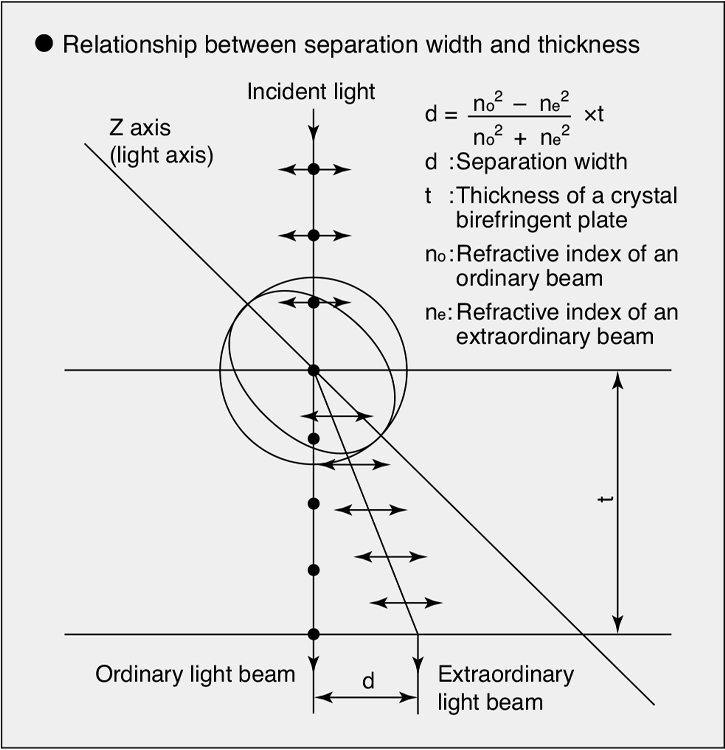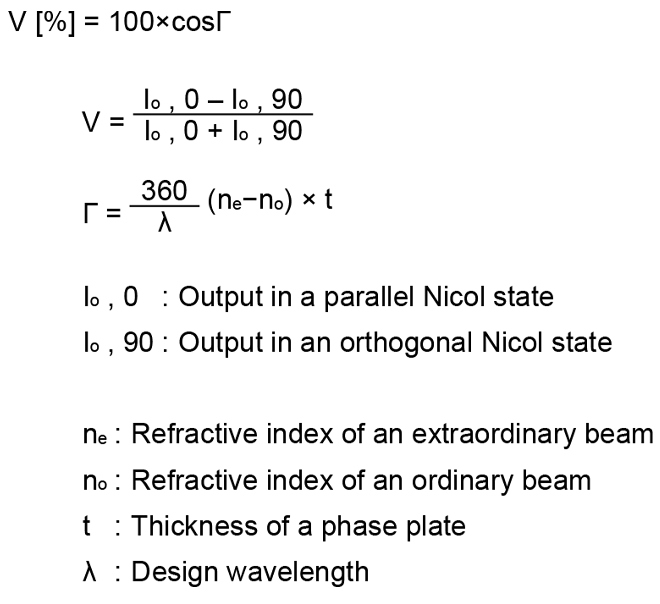Optical Low-pass Filter
■Optical Low-pass Filter
This uses elements that separate ordinary and extraordinary beams of incident light to remove pseudo-signals.
■Separation Width
The distance between the ordinary and extraordinary beams separated when light passes through an optical low-pass filter, and this is proportional to the width of the low-pass filter.
■Pseudo-signal
Generated by solid-state image pickup devices, pseudo-signals causes horizontal lines to look jagged or the black-and-white lattice fringe to be colored.
■Spectral Characteristic
This indicates transmittance with respect to light wavelength. A coating or glass is used for an optical lowpass filter in order to block out near-infrared light beams.

λ/4 and λ/2 Wavelength Plates
■Crystal Wavelength Plate
An element that uses the velocity difference between ordinary and extraordinary light beams to create a phase difference between both beams; the difference is obtained by using the birefringence of a crystal. When this characteristic is used, a λ/4 wavelength plate converts linearly-polarized light into circularly-polarized light, and a λ/2 wavelength plate converts circularly-polarized light into linearlypolarized light with its polarization plane rotated by 90 degrees.
■Wavefront aberration
This indicates the Peak-to-Valley difference
of a measured wavefront as a unit of design wavelength: the
Zygo Corporation's phase interference system is used to provide
the data.
P - V = (maximum phase angle - minimum phase angle)
■Extinction Ratio
This indicates a value for the phase accuracy of a wavelength plate, and the conversion equation of the extinction ratio V [%] and phase difference Г [deg] is as follows:

Optical Component
